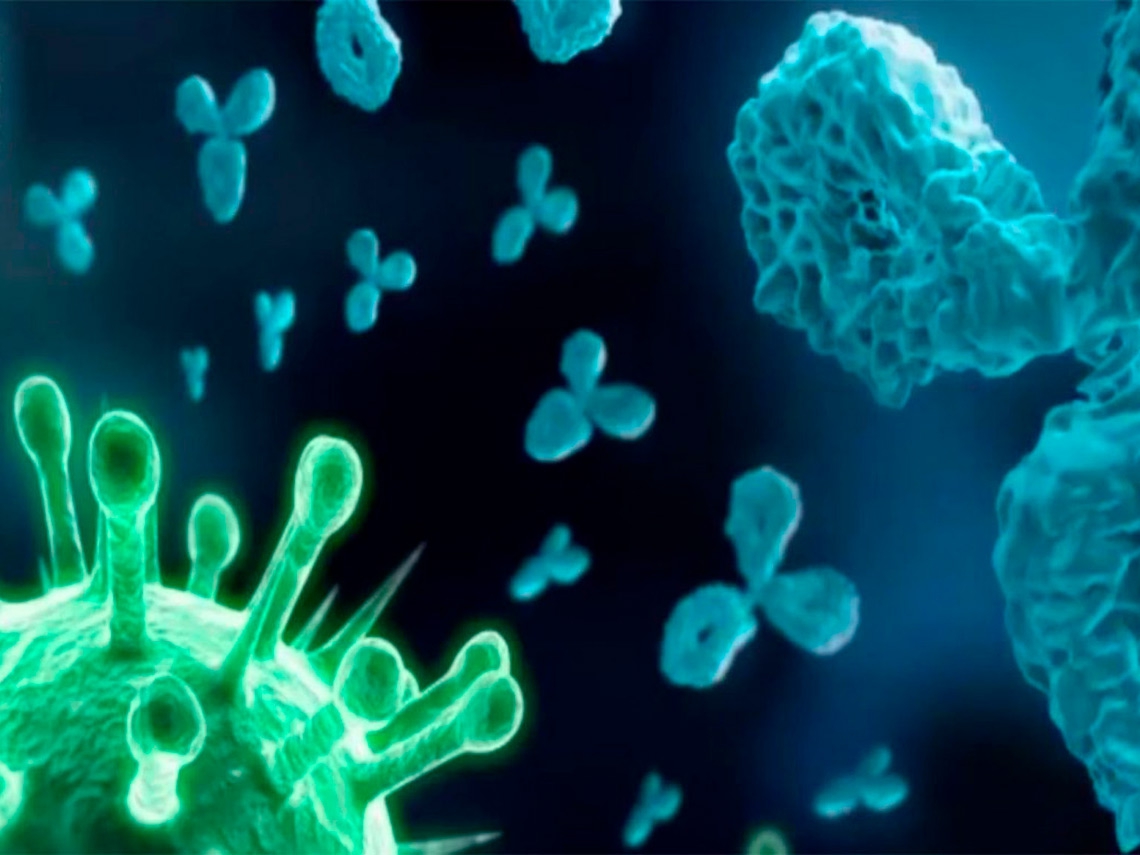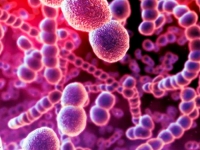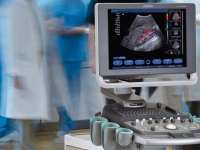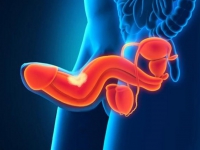Mycoplasma genitalium is a pathogenic microbe with absolute pathogenicity that can cause urethritis in men; urethritis, cervicitis and PID in women.
Mycoplasma hominis, Ureaplasma urealyticum, Ureaplasma parvum are opportunistic microorganisms that sometimes (with a decrease in immunity) can cause urethritis, cervicitis, cystitis, complications of the course of pregnancy such as frozen (undeveloped), complications after childbirth and abortion - more often when combined with such STDs like trichomoniasis, gonorrhoea, chlamydia.
The main factors of the aggressiveness of mycoplasmas are adhesins, which promote the adhesion of microbes on the host cells, which determines the leading role in the development of the initial phase infectious process; endotoxins; enzymes of aggression and products of their metabolism.
Mycoplasmas belong to Mollicutes, which are characterized by the smallest free-living self-propagating prokaryotes, with the size of viruses; the absence of a rigid cell wall, in contrast to bacteria, which is replaced by a three-layer cytoplasmic membrane; the presence of DNA and RNA in cells at the same time, the ability to vegetate on nutrient media without the presence of cells, multiply by binary division, a variety of cells, susceptibility to some antibiotics - in contrast to viruses. Mycoplasmas are capable of adhesion and vegetation on the membrane of eukaryotic cells, in contrast to chlamydia.
The structure and size of mycoplasmas can vary depending on the age of the culture for cultivation, media and cultivation conditions. Mycoplasmas belong to the genus Mycoplasma, which includes about 100 species. But only some mycoureaplasmas cause the development of inflammatory processes of the genitourinary organs in men and women:
- Strictly absolute pathogenic microbe Mycoplasma genitalium
- Conditionally pathogenic microbes: Mycoplasma hominis, Ureaplasma urealyticum, Ureaplasma parvum.
M. genitalium is a motile bacterium that has a bulbous shape and an elongated terminal structure that provides a sliding movement, with penetration into the layers of mucus on the surface of epithelial cells, fixation to cells and further penetration, which is provided by neuraminic receptors and which explains the pronounced pathogenic effect on cells and the formation of an inflammatory response by cells. The smallest genome size was found in M. genitalium among all mycoplasmas and other microorganisms that self-replicate, which significantly complicates its scientific research associated with the complexity and duration of cultivation (1-5 months) due to the high selectivity and exactingness of M. genitalium to media for vegetation. This is due to the small number of genes involved in the fermentation mechanism of nutrients required for the growth and development of a microorganism. M. genitalium is prone to the columnar epithelium and, consequently, to damage to the mucous membranes of the urethra and cervical canal. Infection with M. genitalium in adult men and women occurs through unprotected sex, in children - both intrapartum (during childbirth) and sexually. The value of M. genitalium as a cause in the development of epididymitis and prostatitis has not been fully proven.
Ureaplasma
Ureaplasmas belong to a separate genus Ureaplasma of the Mycoplasmataceae family. The differences found in the urease genes divide biovars into different ones: biovar 1 - U. parvum, biovar 2 - U.urealyticum.
According to a 2006 WHO examination, U.urealyticum is a potential causative agent of nonspecific non-gonococcal urethritis in men and, possibly, pelvic inflammatory disease (PID) in women. Although the CDC experts from 2010 (USA) do not fully consider the causal role of genital mycoplasmas (with the exception of M. genitalium) in the development of inflammatory processes of the genitourinary system.
Epidemiology of diseases caused by mycoureaplasmas
The detection rate of M. genitalium in patients with inflammatory diseases of the genitourinary system is, from 10% to 45%, in 11.5-41.7% of patients with non-gonococcal urethritis, 3-54.5% of patients with non-gonococcal - non-chlamydial urethritis and in 7-10 % of women with PID.
The detection statistics for opportunistic genital mycoplasmas (Ureaplasma spp. And Mycoplasma hominis) differ in different population groups, ranging from 10% to 50% (according to some studies, up to 80%). Ureaplasma spp and M. hominis are sometimes detected in clinically healthy individuals (in 5-20% of cases), and under some conditions, they can cause infectious and inflammatory diseases of the genitourinary system.
Classification of mycoureaplasmosis
Clinical forms, uncomplicated:
- Urethritis caused by M. genitalium.
- Cervicitis caused by M. genitalium.
- Urethritis caused by Ureaplasma spp (and/or) M. hominis.
- Cervicitis caused by Ureaplasma spp (and/or) M. hominis.
- Vaginitis caused by Ureaplasma spp (and/or) M. hominis.
Clinically complicated forms:
- Cystitis caused by Ureaplasma spp (and/or) M. hominis.
- Salpingo-oophoritis caused by M.genitalium.
- Endometritis caused by M. genitalium.
Clinic of mycoureaplasmosis
Clinical picture of diseases caused by M. genitalium (urethritis, cervicitis), with a course without complications
A clinically vivid picture is manifested by various symptoms: discharge from the urethra, genital tract mucus, pus; acyclic spotting; soreness of sexual intercourse (dyspareunia) and urination (dysuria); itching, burning; discomfort, heaviness, or pain in the lower abdomen.
An objective examination in women reveals redness and swelling of the mucous membrane, infiltration of the walls of the urethra, the mucous membrane of the cervix, discharge from the urethra or cervical canal of mucus, pus.
The main complaints of men are: not abundant discharge from the urethra of mucus, pus; itching, burning, dysuria; discomfort, itching, burning in the urethra; dyspareunia; frequent urination, with an urgent urge to urinate (characteristic of the proximal localization of the inflammatory process); pain in the perineum, radiating to the rectum.
An objective examination in men reveals redness and swelling of the mucous membrane of the external opening of the urethra, infiltration of its wall, discharge from the urethra of mucus, pus—clinical picture of diseases caused by M. genitalium, with a complicated course.
The main complaints of women are
- salpingo-oophoritis: cramping pain in the lower abdomen, with secretions from the genital tract of mucus, pus; in the chronic course of the disease, subjective manifestations are less pronounced, with more frequent violations of the menstrual cycle;
- endometritis: pulling pains in the lower abdomen, with discharge from the genital tract of mucus, pus; in the chronic course of the disease, subjective manifestations are less pronounced, with more frequent between scanty menstrual spotting.
An objective examination of women reveals:
- salpingo-oophoritis: in the acute phase of inflammation of the genitourinary system, enlarged, sharply painful fallopian tubes and ovaries are determined, shortening of the vaginal vaults on palpation, abundant mucus, pus from the cervical canal; in the chronic phase - slight pain, hardening of the fallopian tubes on palpation;
- endometritis: the acute phase of inflammation is characterized by painful enlargement of the uterus of a soft consistency on palpation, with an abundant amount of mucus, pus from the cervical canal; in the chronic course of the disease - a dense consistency and limited mobility of the uterus on palpation
Diseases caused by Ureaplasma spp. And/or M. hominis (urethritis, cervicitis), uncomplicated forms
Clinical picture of diseases caused by Ureaplasma spp. And/or M. hominis (urethritis, cervicitis), uncomplicated course
The main complaints of women are discharged from the urethra, genital tract mucus, pus; dyspareunia; itching, burning, dysuria, discomfort, pain in the lower abdomen.
An objective examination of women reveals redness and swelling of the mucous membrane of the external opening of the urethra, with infiltration of its walls, abundant discharge from the urethra of mucus, pus; mucous membrane of the vagina and cervix, with the presence of secretions in the lateral and posterior fornix of the vagina, cervical mucus, pus.
The main complaints of men are: not abundant discharge from the urethra of mucus, pus; itching, burning, dysuria; discomfort in the urethra; dyspareunia; increased urination and urgency to urinate (with proximal localization of the inflammatory process); pain in the perineum with frequent irradiation to the rectal area.
An objective examination of men reveals: redness and swelling of the mucous membrane of the external opening of the urethra, with infiltration of its walls and discharge from the urethra of mucus, pus.
Laboratory diagnostics of diseases caused by mycoureaplasmas:
Diagnosis of diseases caused by M. genitalium:
Examination for M. genitalium is mandatory
- men and women with clinical and laboratory signs of the inflammatory process of the genitourinary system;
- when examining sexual partners before planning a pregnancy;
- pregnant women;
- during preoperative preparation before surgical (invasive) manipulations or interventions on the organs of the genitourinary system;
- persons with no pregnancy and a history of infertility;
- sexual partners of STD patients;
- survivors of sexual assault
- patients with STDs (trichomoniasis, gonorrhoea, chlamydia)
- patients with relapses of the inflammatory process after treatment with STDs identified the day before and treated
- people who often change sexual partners and do not use barrier methods of contraception.
Diagnosis of urogenital diseases caused by M. genitalium is carried out by laboratory molecular biological methods in order to detect specific DNA fragments (PCR method) and/or RNA (NASBA method) in the detachable mucous membranes of female genital organs, urethra, prostate secretions, sperm, with a sensitivity of 98-100%, a specificity of 100%, which can be influenced by various suppressing factors, to minimize which the organization and operation of laboratories is strictly controlled, to exclude contamination of clinical material with foreign impurities.
The conditions for obtaining the most accurate results of laboratory diagnostics are:
- The timing of the collection of analyzes for the detection of M. genitalium by the method of RNA amplification (NASBA) is carried out no earlier than 14 days after the end of the antibiotic intake; by the method of DNA amplification (PCR, PCR-real-time) - not earlier than one month after the end of antibiotic therapy;
- collection of discharge from the urethra is carried out no earlier than 3 hours after the last urination, and in the presence of abundant discharge from the urethra - 15-20 minutes after urination;
- samples are taken from the cervical canal and vagina outside the period of menstruation;
- strict adherence to the conditions of delivery of samples to the laboratory.
In the presence of an acute phase of urethritis in men, examine the first portion of urine.
Other laboratory methods, such as culture, direct immunofluorescence (DIF), enzyme-linked immunosorbent assay (ELISA) for the detection of antibodies to M. genitalium, are currently not widely used due to significantly lower sensitivity and specificity.
Do not use biological, chemical and alimentary provocations to improve the accuracy of diagnosis and to treat urogenital diseases caused by M. genitalium. Diagnosis of diseases caused by Ureaplasma spp., M. hominis
Identification of Ureaplasma spp., M. hominis is carried out by molecular biological PCR methods aimed at detecting specific DNA fragments of microorganisms in the male urethra separated from the urethra, prostate secretion, sperm; detachable female genital organs with a sensitivity of 98-100%, specificity - 100%, which can be influenced by various suppressing factors, to minimize which the organization and operation of laboratories is strictly controlled, to exclude contamination of clinical material with foreign impurities. Also used for the identification of Ureaplasma spp., M.hominis methods of microbiological (cultural) study of the separated female genital organs; urethra, prostate secretions, sperm of men on Ureaplasma urealyticum, M. hominis. ("Mycoplasma DUO" to detect and "SIR Mycoplasma" - to determine the sensitivity of Ureaplasma urealyticum, M. hominis to antibiotics), with a sensitivity of 95-98% and specificity - 90-95%.
After the detection of ureaplasmas and mycoplasmas, a laboratory-microscopic examination of the clinical material is mandatory, with a further assessment of the degree of leukocyte reaction (inflammation) and the state of microbiocenosis of the urethra, vagina, cervical canal in women; urethra, prostate and sperm in men. Laboratory indicators of the presence of inflammation in the urethra (urethritis) in men are the detection: in smears from the urethra, more than five leukocytes in the field of view when viewing more than five fields of view with light microscopy, with a magnification of 1 x1000; in the sediment of the first portion of urine there are more than ten leukocytes with a magnification of a light microscope 1 x 400.
Laboratory indicators of the presence of urethritis in women is the detection of more than 10 leukocytes in the field of view in smears from the urethra; vaginitis is the detection of more than 15-20 polymorphonuclear leukocytes in the field of view in vaginal smears, as well as the ratio of leukocytes to squamous epithelial cells more than 1: 1; cervicitis is the detection of more than 10 leukocytes in the field of view in the discharge of the cervical canal when viewing more than 5 fields of view using a light microscope at a magnification of 1 x 1000 and the presence of secretions from the cervical canal of mucus, pus.
The conditions for obtaining the most accurate results of laboratory tests are:
- sampling of tests for the detection of Ureaplasma spp., M. hominis by cultural methods is carried out no earlier than 14 days after the end of antibiotic intake, by DNA amplification methods (PCR, PCR - real-time) - no earlier than a month after the end of antibiotic therapy;
- collection of discharge from the urethra is carried out no earlier than 3 hours after the last urination, in the presence of abundant discharge from the urethra - 15-20 minutes after urination;
- the collection of clinical material from the cervical canal and vagina is performed outside the period of menstruation;
- strict adherence to the conditions of delivery of samples to the laboratory.
Other laboratory methods, such as direct immunofluorescence (DIF), enzyme-linked immunosorbent assay (ELISA) for the detection of antibodies to Ureaplasma spp. and/or M. hominis is currently not widely used due to its lower sensitivity and specificity.
Do not use biological, chemical and alimentary provocations to improve the accuracy of diagnosis and in the treatment of urogenital diseases caused by Ureaplasma spp. and/or M. hominis.
Management of pregnant women with diseases caused by Ureaplasma spp. and/or M. hominis, and especially M. genitalium, as well as women with pelvic inflammatory disease (PID), are performed by obstetricians-gynaecologists.
Diagnosis and treatment of possible complications of mycoureaplasma infection in men on the genitourinary system with impaired reproductive function are carried out by urologists andrologists.
Treatment of M. genitalium infections
When treating urogenital diseases caused by M. genitalium, with an uncomplicated course, it is recommended to prescribe per os antibacterial drugs:
- doxycycline monohydrate 100 mg 2 times a day for ten days.
- josamycin 500 mg 3 times a day for ten days.
- ofloxacin 400 mg 2 times a day for ten days.
For the treatment of urogenital diseases caused by M. genitalium, with a complicated course, it is recommended to prescribe per os antibacterial drugs:
- doxycycline monohydrate 100 mg 2 times a day for 14-21 days.
- josamycin 500 mg 3 times a day for 14-21 days.
- ofloxacin 400 mg 2 times a day for 14-21 days.
The duration of the course of treatment depends on the degree of clinical manifestations of the inflammatory processes of the genitourinary organs, the results of laboratory and instrumental studies; assessment of the degree of risk of forthcoming surgical or invasive interventions, obstetric and gynaecological history, in pregnant women - the course of this pregnancy; the severity of the response to ongoing antibiotic therapy(clinical and laboratory-microscopic indicators, if necessary - the result of an intermediate real-time PCR test), and, if necessary, can be increased up to 21 days.
In the absence of the effect of treatment, it is necessary to exclude reinfection, repeated in-depth and repeated additional examination for associated STDs (trichomoniasis, gonorrhoea, chlamydia), and the appointment of a complex staged treatment.
For pregnant women, it is recommended to prescribe josamycin 500 mg 3 times a day per os for ten days at any stage of pregnancy by obstetricians-gynaecologists.
Children weighing less than 45 kg are prescribed josamycin 50 mg per kg of body weight per day per os, divided into three doses, for ten days. Children weighing more than 45 kg are carried out according to treatment regimens for adults, taking into account contraindications.
Treatment of diseases caused by Ureaplasma spp. and/or M. hominis
If M. hominis and/or Ureaplasma spp. Treatment is carried out in the presence of clinical, laboratory signs of an infectious-inflammatory process, in which other associated and more likely and more common pathogens have not been identified: C.trachomatis, N.gonorrhoeae, T.vaginalis, M. genitalium. If M.hominis and/or Ureaplasma spp. in an amount> 10*4 CFU (GE) / ml (g), in the absence of clinical and/or laboratory signs of an inflammatory process of the genitourinary system, treatment is currently not prescribed. In the absence of clinical and/or laboratory signs of an inflammatory process in the genitourinary organs, but when Ureaplasma spp. and/or M. hominis, treatment is carried out only for sperm donors, persons with a diagnosis of infertility and women with a history of pregnancy loss and perinatal loss, with a burdened obstetric history. They receive treatment aimed at destroying M. hominis and/or Ureaplasma spp., As potential causative agents of inflammatory diseases of the genitourinary system.
Patients with urogenital diseases caused by Ureaplasma spp. and/or M.hominis, prescribe per os antibacterial drugs:
- doxycycline monohydrate 100 mg 2 times a day for ten days.
- josamycin 500 mg 3 times a day for ten days.
The duration of the course of therapy depends on the degree of clinical manifestations of the inflammatory processes of the genitourinary organs, the results of laboratory and instrumental studies, the assessment of the risk of upcoming surgical or invasive interventions, the obstetric and gynaecological history, in pregnant women - the course of the pregnancy existing at the time of treatment; the severity of the response to the ongoing antibiotic therapy (clinical, laboratory-microscopic indicators, if necessary - the result of an intermediate real-time PCR test) ), and, if necessary, can be increased up to 14 days. However, the duration of treatment can significantly increase with a very frequent association of genital mycoplasmas with causative agents of other STDs, such as trichomoniasis, gonorrhoea, chlamydia, which, as a rule, proceed torpidly and are detected in the chronic stage, after repeated examinations by different methods, in the presence of complications on the urinary organs. Systems - in such cases (the overwhelming majority), complex staged treatment is carried out.
Pregnant women have prescribed josamycin 500 mg for treatment3 times a day per os for ten days and at any stage of pregnancy by obstetricians-gynaecologists.
For children with a bodyweight of less than 45 kg, during treatment, it is recommended to prescribe josamycin 50 mg per kg of body weight per day per os, divided into three doses, for ten days.
Children with a bodyweight of more than 45 kg are carried out according to treatment regimens for adults, taking into account contraindications.
Prevention and dispensary observation:
Prevention of infections caused by M. genitalium:
- exclusion of casual sex;
- mandatory use of barrier methods of contraception and antiseptics
- examination for STDs and treatment of sexual partners.
Establishment of the cure of infections caused by M. genitalium based on RNA amplification methods (NASBA) is carried out 14 days after the end of antibiotic treatment, based on DNA amplification methods (PCR, PCR-real-time) - not earlier than a month after the end of antibiotic therapy. Criteria for cure are positive clinical dynamics, dynamics of microscopic laboratory parameters, eradication (for M. genitalium) or a decrease in the titer of other genital mycoureaplasmas. Patients with negative laboratory test results are not subject to further observation and examination.
- Establishing the cure rate of diseases caused by Ureaplasma spp. and/or M.hominis is carried out on the basis of microscopic examination of smears from the urethra, vagina and cervical canal in women and from the urethra, secretion of the prostate gland and sperm in men (to assess laboratory signs of the inflammatory process) and the cultural method of research - 14 days after the end of antibiotic treatment, based on DNA amplification methods (PCR, PCR-real-time) - not earlier than one month after the end of treatment with antibacterial drugs.
- Patients with unknown sources of infection are examined for syphilis after three months, for HIV, hepatitis B and C - after 3-6-9 months.







